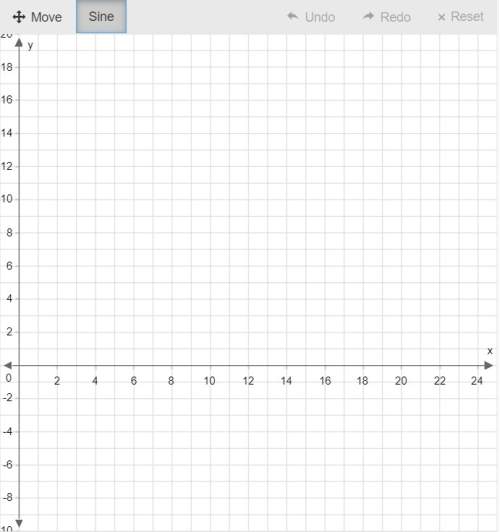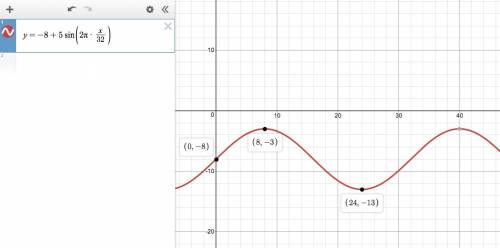
Mathematics, 31.10.2019 23:31, deaishaajennings123
At an ocean depth of 8 meters, a buoy bobs up and then down 5 meters from the ocean's depth. sixteen seconds pass from the time the buoy is at its highest point to when it is at its lowest point. assume at x = 0 the buoy is at normal ocean depth.
use the sine tool to graph the function. the first point must be on the midline and the second point must be a maximum or minimum value on the graph closest to the first point.


Answers: 3
Other questions on the subject: Mathematics

Mathematics, 21.06.2019 13:40, harleyy6802
What is the correlation coefficient for the data? don't forget to turn the diagnoisticon (in the catalog menu of the calculator). r = answer (round to the nearest thousandth)
Answers: 1

Mathematics, 21.06.2019 17:00, ayoismeisalex
Describe what moves you could use to create the transformation of the original image shown at right
Answers: 1

Mathematics, 21.06.2019 21:50, jak000067oyyfia
Which rule describes the composition of transformations that maps ajkl to aj"k"l"? ro. 900 o to, -2(x, y) to, -20 ro, 900(x, y) ro, 9000 t-2. o(x, y) t-2, 00 ro, 900(x, y)
Answers: 2
Do you know the correct answer?
At an ocean depth of 8 meters, a buoy bobs up and then down 5 meters from the ocean's depth. sixteen...
Questions in other subjects:

Mathematics, 30.12.2019 23:31




Mathematics, 30.12.2019 23:31




Mathematics, 30.12.2019 23:31







